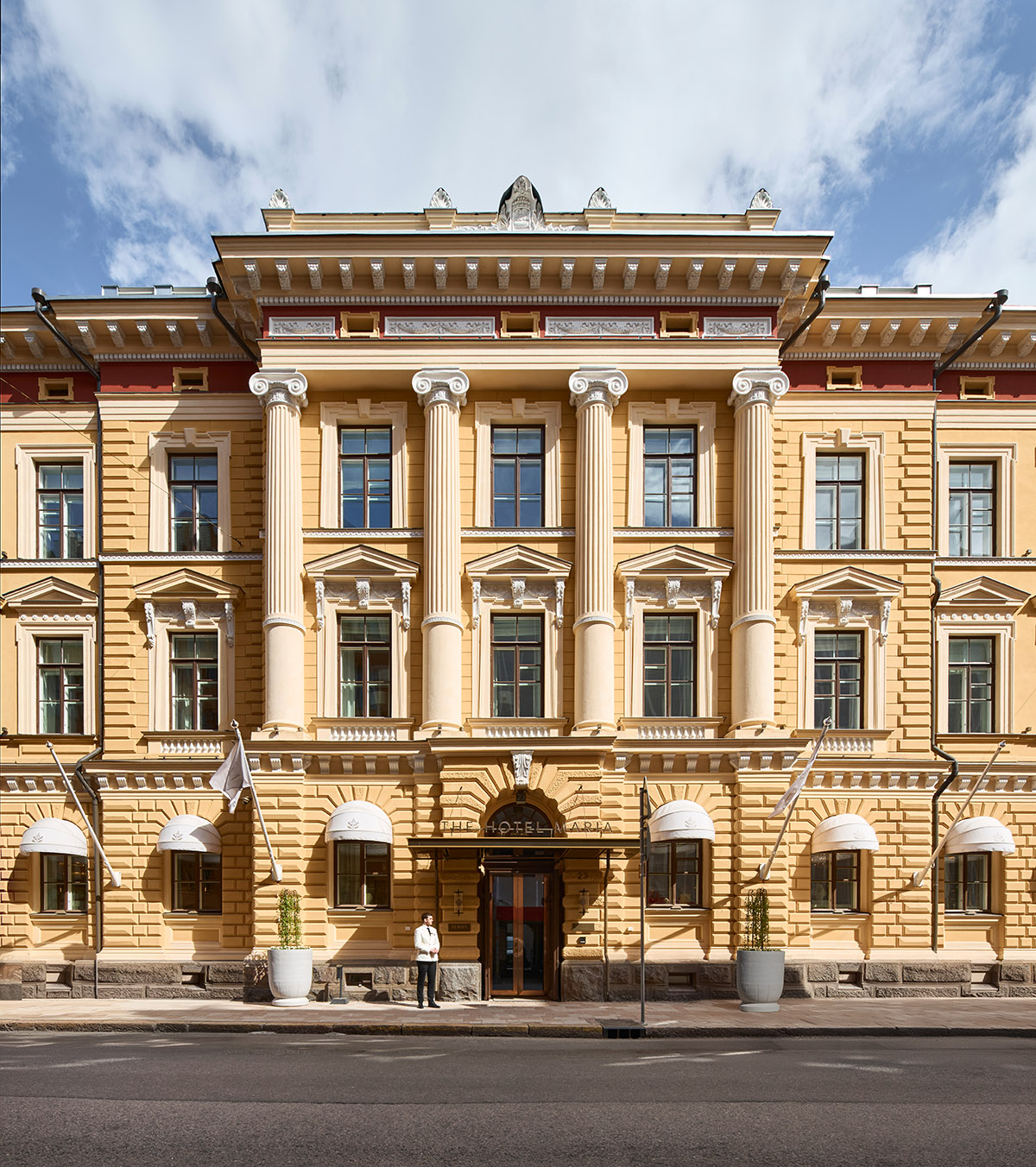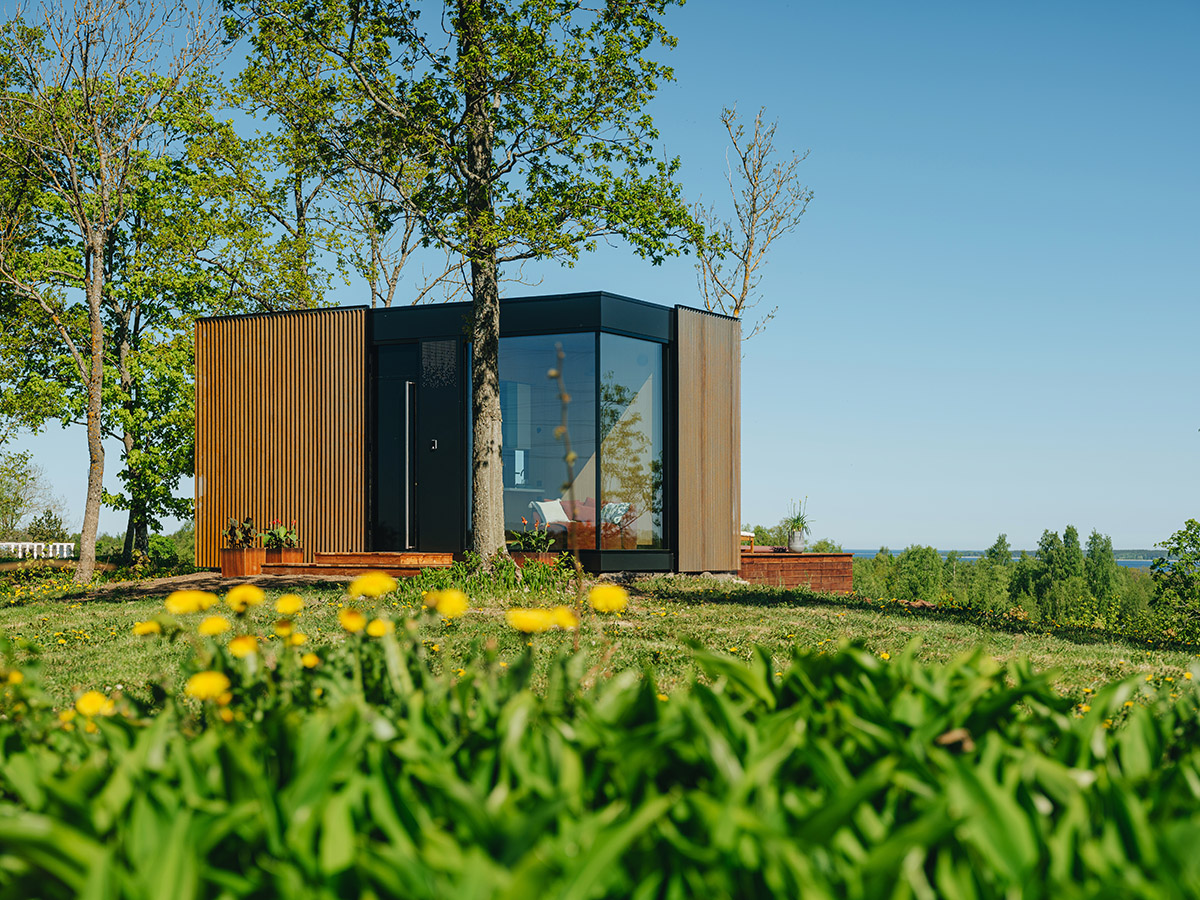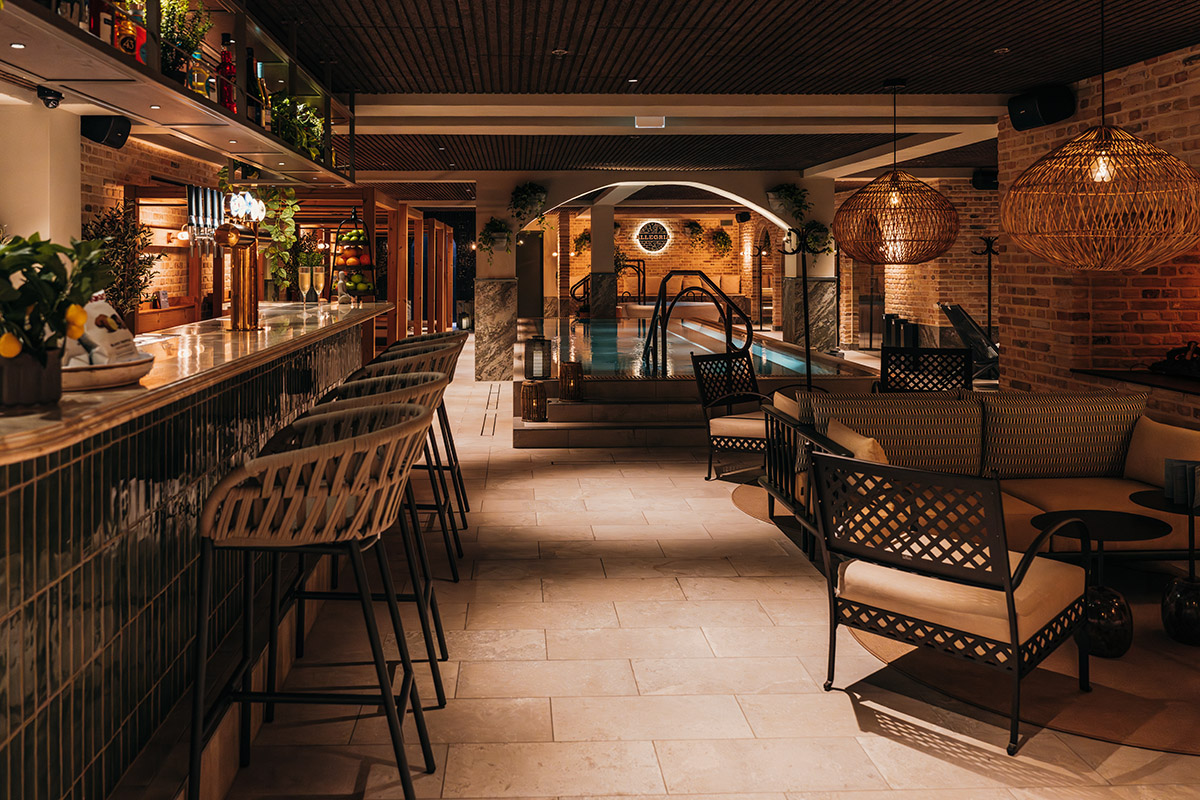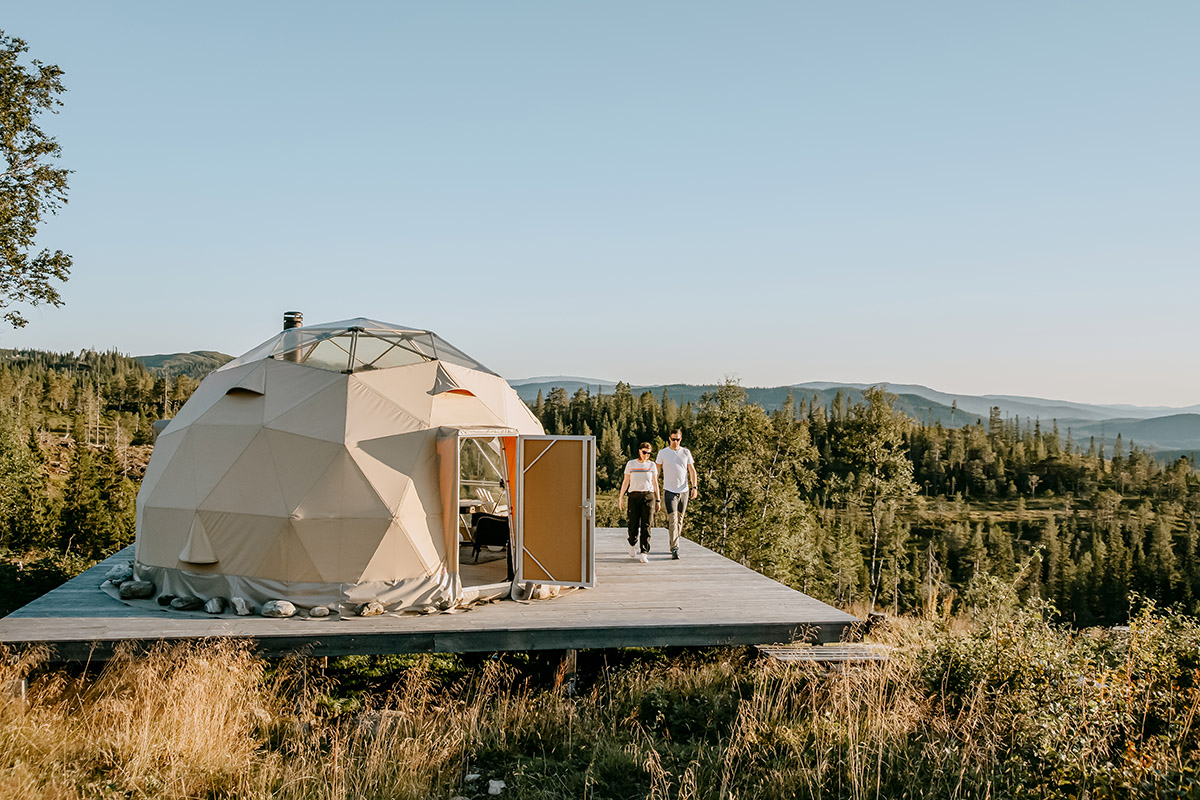Hotel Arctic
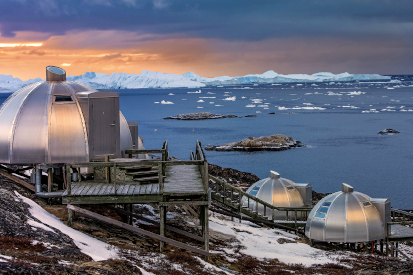
A world beyond imagination
TEXT: LOUISE OLDER STEFFENSEN | PHOTOS © HOTEL ARCTIC
The town of Ilulissat, numbering 5,000 inhabitants and almost 2,000 sled dogs, is Greenland’s third-largest city and most popular tourist destination. Situated at the entrance to the festively-named Disko Bay in the Ilulissat Fjord on Greenland’s western shore, the town is known for its vivid marine life and spectacular icebergs – ‘Ilulissat’ means iceberg in the Kalaallisut language of West Greenland. The area’s almost otherworldly surroundings have made the town home to crucial climate change research – and to the world’s most northerly high-end hotel and conference centre, Hotel Arctic.
“The view here changes every single day,” says Erik Bjerregaard. “And every day, the surroundings take my breath away.” Bjerregaard moved from Denmark to Greenland more than four decades ago and has been the manager of Hotel Arctic for 27 years. Logistics can be tough 250 kilometres north of the Arctic Circle and yet the hotel has acquired four stars, the conference centre five, and the hotel’s gourmet restaurant has been included in the White Guide, the Nordic countries’ guide to the best restaurants. Guests have included Ban Ki-moon, Sepp Blatter, Angela Merkel, all Danish Prime Ministers over the past 20 years and the Danish royal family, as well as countless high-ranking government officials from across the globe, who come to see the effects of climate change for themselves.
Nature
Ilulissat Icefjord became a UNESCO World Heritage Site in 2004 and is the site of the 2008 Ilulissat Declaration by the five Arctic Ocean coastal states of Denmark, Norway, Russia, Canada and the US, which pledged to consider the environment and climate change amidst territorial disputes and the planning of new shipping routes. “The first helped to put Ilulissat on the map,” says Bjerregaard, “but it was actually the 2008 Arctic Ocean Conference which really brought awareness of Ilulissat and how special it is up here.” Bjerregaard himself has witnessed the retraction of the ice sheet over the years – although a recent visiting researcher told him that it has grown a little this year.
The cracks and groans of the moving ice make it a constant, pervasive presence in the town. Whether you look out to the icy sea or to the jagged mountains left behind by the ice, you are reminded of the awesome power of nature. Despite the modern society and its amenities, everyone in Ilulissat maintains a close relationship with nature.
The entire area around Ilulissat Fjord feeds off the icebergs. “When they break apart, they release oxygen into the air and water, which helps microorganisms to thrive and forms the basis for an incredible amount of marine biodiversity,” Bjerregaard explains. “In turn, fish like halibut feed off the microorganisms and love the area – they grow massive here.” Fishing is still a highly significant source of income in Ilulissat, and visitors to Hotel Arctic’s Restaurant Ulo can expect to taste some of the freshest, most flavoursome fish they will ever encounter. The New Nordic restaurant’s chefs are regular customers of the many fishing boats nestled in between the colourful houses that surround Ilulissat’s harbour.
Nurture
“Our chefs really know how to get the very best out of local ingredients – which we actually have a lot of, from musk ox to mussels and garden angelica from the Island of Disko,” Bjerregaard explains. “People may be surprised to hear that we also grow our own fresh produce, such as potatoes, and that cattle and sheep farming is becoming quite widespread a little further south, ironically due to the warmer climate.”
While Bjerregaard and his colleagues were very happy that Restaurant Ulo made the White Guide, they have no plans to try for Michelin stardom. “The conditions here are just too inconsistent – Michelin requires stability, and our kitchen is all about inventing new methods of cooking and preservation and regular menu change-ups to use what is here. Although we do get some produce sent in weekly from North America and Denmark, our chefs and trainees become experts at seasonality and using ingredients in many surprising ways – and they pull off amazing dishes.”
The kitchen is run by a mix of Greenlandic and Danish chefs, while most waiters and hotel staff members are from Greenland. Both the restaurant and hotel, which has to be self-sufficient, run schemes through which young Greenlanders receive part of their hospitality training in Aalborg and part at Hotel Arctic. The research activity and upswing in tourism have created new sources of income, providing both seasonal and regular employment for locals and a wide range of fantastic experiences for tourists, including hikes and snow scooter tours with local guides, whale watching, three museums, flight or boat trips around the icebergs, and visits to the Jakobshavn Glacier (the source of the icefjord’s many icebergs). Ilulissat Airport has been running since the ‘80s, and guests at Hotel Arctic can use a free airport shuttle to and from the hotel.
“There’s also a 1.3 kilometre boardwalk from the town, which allows everyone, including those with disabilities, to get to Sermermiut, the site of an ancient settlement at the edge of the fjord. There, they’ll find what I’d wager is simply the most amazing view in the world,” Bjerregaard promises. He adds: “At the hotel, we have our own little boardwalk, at the end of which you’ll find our fjord-side igloos, which are perfect for our more adventurous guests. They have front-row views of the sea and its icebergs.” Open from May to September, the ‘igloos’ are built and styled in the same way as traditional Inuit igloos, however, are made from metal rather than snow, to accommodate modern amenities, such as electricity and bathrooms. Those opting to stay in the more classic rooms and suites in the main building need not fear – most of the rooms enjoy views of the bay which trump any other wall decor. A large breakfast buffet is provided, and guests can further enjoy the view and a drink in the café, bar or on the terrace.
Culture
Those coming from afar often combine Ilulissat with a stay in southern Greenland or Iceland. Bjerregaard believes that is a great idea, but has one piece of advice before readers go on a booking frenzy: “Make sure that you have enough time in each place – some people regret only scheduling two days or so in Ilulissat. It takes a while to settle in and get used to things like midnight sun, or having very little light but the Northern Lights during winter,” he advises. “The weather is also a little unpredictable and you might encounter storms or fog. I’d recommend about five days to account for those factors. And also because you’ll fall in love with the place.”
Bjerregaard retires at the end of the summer at the tender age of 76. He has no plans to move from Ilulissat or slow down completely. “Why would I? They say that culture derives from nature, and I’ve grown to love the Greenlandic culture and attitude to life: ‘Be open to change, and trust in fate and each other’; ‘Don’t take yourself too seriously’; and ‘Take life one day at a time’. That’s what I’ll do. I want to continue to be part of Ilulissat and to welcome new people to its splendid nature and community. My wife, who is Greenlandic, owns one of the shops in town, the GlacierShop, so we’ll focus on that and take it day by day.” The couple have, however, decided to donate their nine sled dogs to a local orphanage. “It’s the right thing to do. But I’ll miss them. It’s a fantastically therapeutic thing to be out with the dogs on the endless, awesome ice.”
Website: hotelarctic.com
Facebook: Hotelarctic
Instagram: @Hotelarctic
Subscribe to Our Newsletter
Receive our monthly newsletter by email

